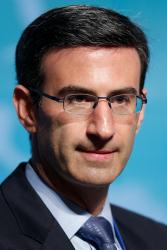In the aftermath of the recent terrorist attacks, the Federal Reserve Board reduced interest rates and Congress approved a $40 billion spending package for defense, rescue and rebuilding efforts, and an airline bailout program. The key issues facing policy-makers are whether additional stimulus proposals should be approved, and if so, what form they should take. Spending initiatives aimed at quickly stimulating the economy—including the rapid rebuilding of New York City and efforts to attenuate the costs of economic slowdown—are worthy of consideration, and should likely form part of any stimulus package. Since tax cut proposals have now taken center stage in the stimulus debate, however, the focus of this paper is the stimulus potential of alternative types of tax cuts.
The effectiveness of any potential tax stimulus needs to be evaluated relative to the current and expected economic and budget outlook. The attacks disrupted the workings of an already weakening economy, and may well have pushed the economy into a recession. But the economy’s long-term prospects remain strong. The 10-year budget outlook, which was relatively auspicious at the beginning of the year, has deteriorated rapidly due to the tax cut enacted this spring, the weakening of the economy before the terrorist attack, and the weakening economy after the attack. The economic outlook thus suggests the need for policies that stimulate the economy in the short-run. The budget outlook suggests that the long-run revenue impact of stimulus policies should be limited, so as to avoid exacerbating the long-term fiscal situation, which would raise interest rates and undermine the effectiveness of the stimulus.
In short, the most effective stimulus package would maximize its “bang-for-the-buck.” It would direct the largest share of its tax cuts toward spurring new economic activity, and it would minimize long-term revenue losses. This reasoning suggests five principles for designing the most effective tax stimulus package: (1) Allow only temporary, not permanent, items. (2) Set an overall stimulus budget. (3) Structure any business incentives to encourage new investment, not to subsidize previous investments. (4) Design any individual income tax reductions to maximize effect on consumption. (5) Maintain long-term fiscal discipline.
These principles suggest that the most effective tax stimulus packages would stimulate consumer spending and/or business investment in the short run, without exacerbating long-term fiscal problems. Thus, temporary rebates to individuals and temporary subsidies for new investment for firms would likely be the most effective way to stimulate short-term economic activity via tax cuts. It is worth emphasizing, however, that a stimulus package with substantial long-term revenue costs could do more harm than good. Evidence suggests that expensive long-term packages would raise interest rates, which would restrain business and housing investment and interest-sensitive consumption. Many of the stimulus proposals currently being considered are primarily oriented toward longer-run considerations, do little or nothing to address the need to stimulate the economy in the short-run, and would exacerbate long-term fiscal problems. Proposals to cut tax rates on capital gains or on corporate income are particularly problematic along these dimensions. Such proposals may be worth discussing in other contexts, but they clearly represent the wrong policy response at the current time.




